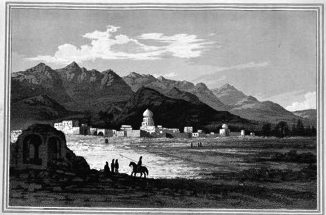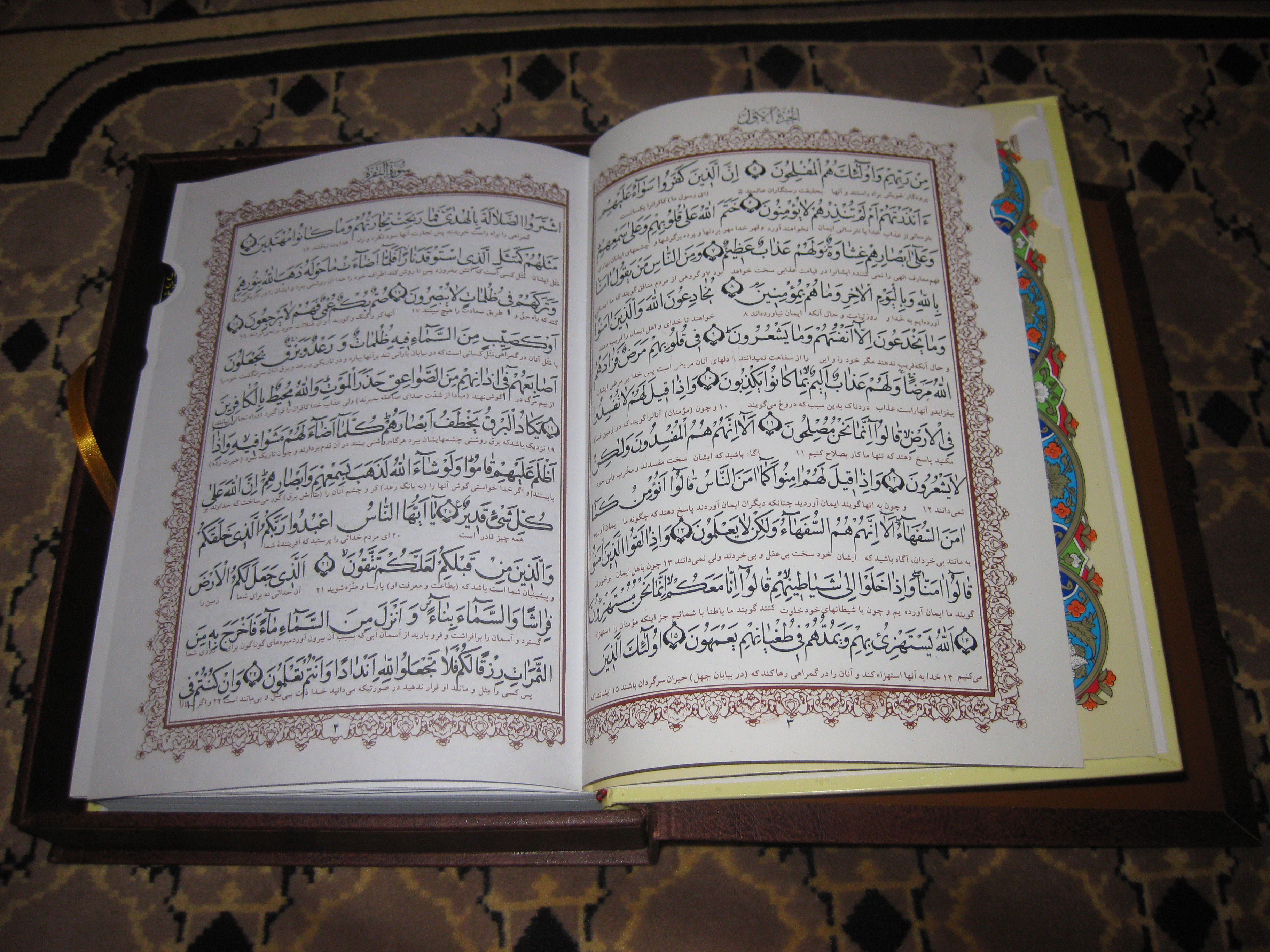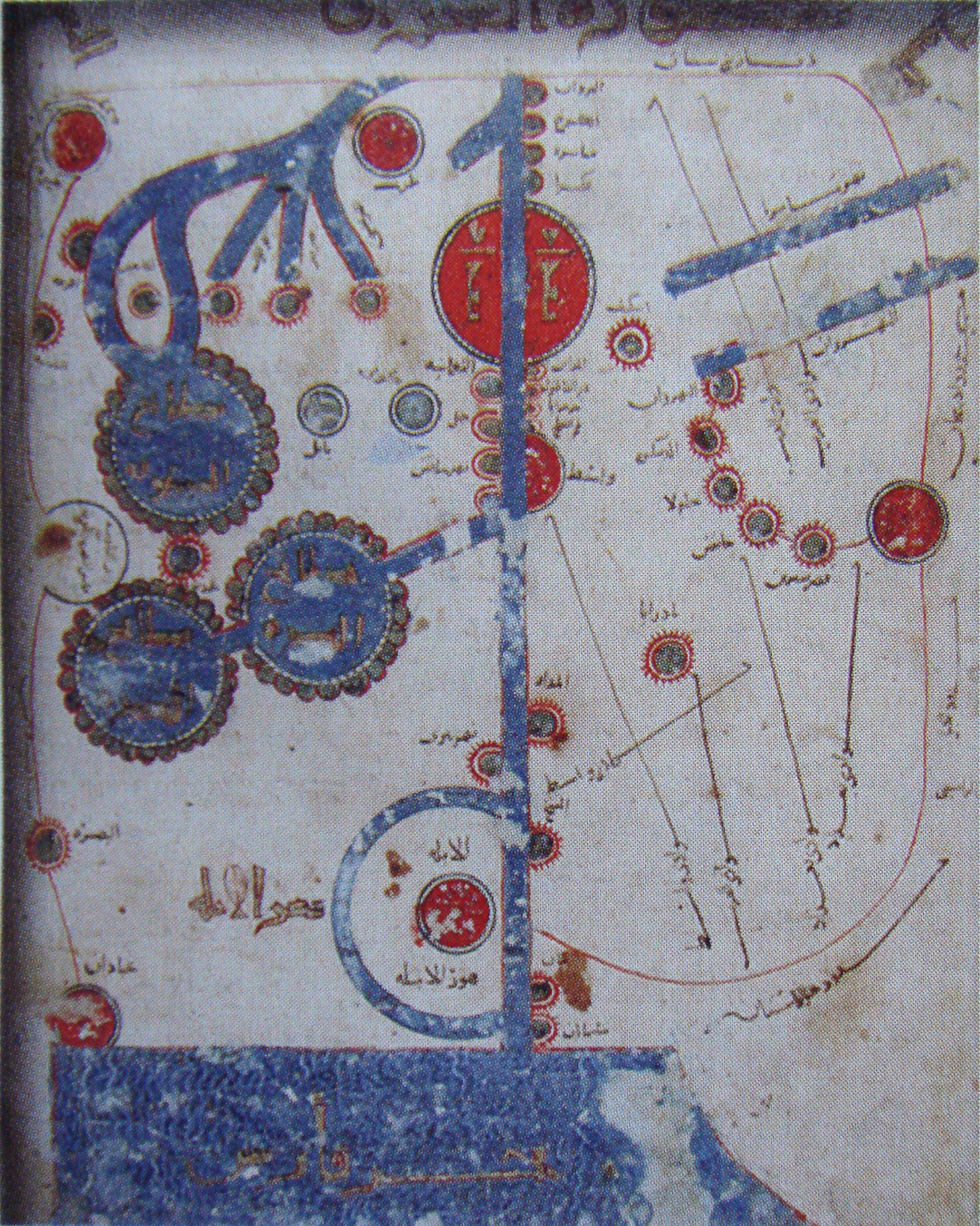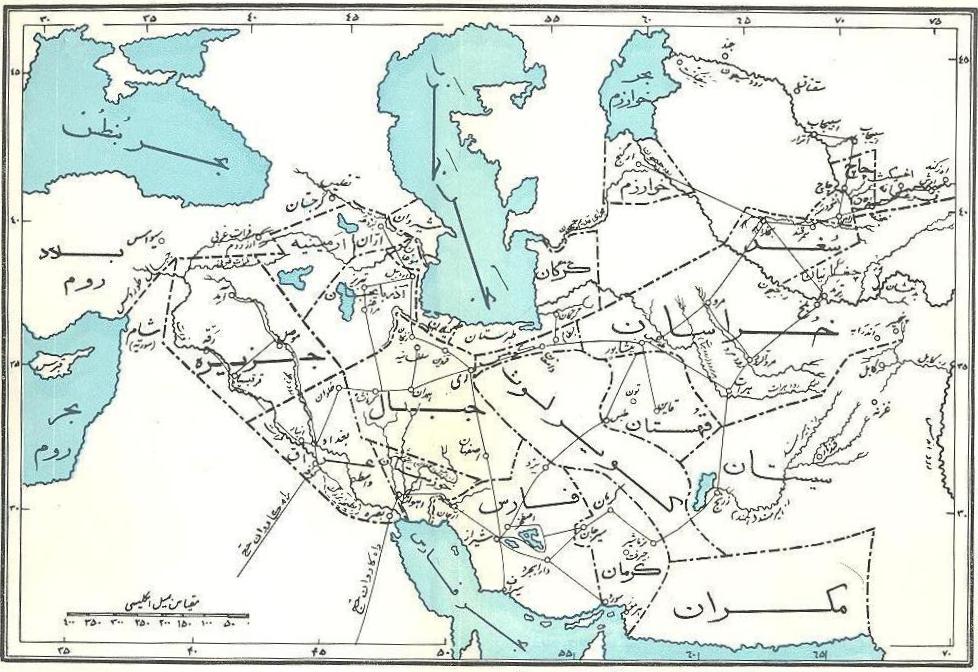|
Abu Ishaq Of Kazerun
Ibrāhīm bin Shahryar bin Zadan Farrokh bin Khorshid (c. 963 – c. 1035; Persian: ابراهیم بن شهریار بن زادانفرخ بن خورشید), better known by his pen-names Abū Ishaq (ابواسحاق) and Sheykh Abū Ishaq of Kazerun (شیخ ابواسحاق کازرونی) and Nicknamed Sheykh Murshid (شیخ مرشد), was one of the famous Iraninan Sufis of the late 4th and early 5th century AH. He was the founder of the Kazeruniyeh sufism, which spread to India and China on one side, and to Anatolia and Baghdad on the other side.Iranica ABŪ ESḤĀQ KĀZARŪNĪ Birth and family Abū Ishaq Ibrāhīm was born on the 15th of Ramadan in the year 352 AH equal to 963 AD in Novard area of Kazerun (currently Olia neighborhood). His father, Shahryar, was a craftsman from the Salmani dynasty of Kazerun, who were relatives of Salman the Persian, and the Muhammad, Prophet of Islam had exempted them from paying the Jizya. Shahryar and Banouye (his mother), who we ... [...More Info...] [...Related Items...] OR: [Wikipedia] [Google] [Baidu] |
Kazerun
Kazerun () is a city in the northwest of Fars Province in Iran and the center of Kazerun County. This city has an ancient history, numerous ancient and historical monuments, and numerous tourist attractions. Kazerun is the largest and most populous city in the west of Fars Province. The population of Kazerun city without suburbs in the 2016 general population and housing census was 96,683 people, and the population of Kazerun county was 211,341 people. Before Islam, the city of Bishapur was one of the capitals of the Sasanian Empire and the center of the current region of Kazerun. When it was destroyed by the Arabs, its residents migrated to the city of Kazerun. Mythological narratives attribute the foundation of the city of Kazerun to the Pishdadian dynasty and Tahmuras, more than 7,500 years ago. Historical accounts also tell of the expansion of this city by Shapur I and Kavad I, two Sasanian kings. The people of the Kazerun and Shapur regions once rebelled and declared ... [...More Info...] [...Related Items...] OR: [Wikipedia] [Google] [Baidu] |
Salman The Persian
Salman Farsi (; ) was a Persian religious scholar and one of the companions of Muhammad. As a practicing Zoroastrian, he dedicated much of his early life to studying to become a magus, after which he began travelling extensively throughout Western Asia to engage in constructive dialogue with non-Zoroastrian groups. His quests eventually prompted his conversion to Christianity and later his conversion to Islam, which occurred after he met and befriended Muhammad in the city of Yathrib. He was a prominent non-Arab companion and one of Muhammad's closest friends; Muhammad had once stated to a gathering of his followers that he regarded Salman as a part of his family. In meetings with the other companions, he was often referred to by the . Prior to the Battle of the Trench in 627, Salman suggested to Muhammad and the other early Muslims that a large trench be dug around Yathrib (citing a technique commonly used by the Sasanian army) in order to help defend against the Quraysh, ... [...More Info...] [...Related Items...] OR: [Wikipedia] [Google] [Baidu] |
Fire Temple
A fire temple (; ) is a place of worship for Zoroastrians. In Zoroastrian doctrine, ''atar'' and '' aban'' (fire and water) are agents of ritual purity. Clean, white "ash for the purification ceremonies sregarded as the basis of ritual life", which "are essentially the rites proper to the tending of a domestic fire, for the temple ireis that of the hearth fire raised to a new solemnity". For, one "who sacrifices unto fire with fuel in his hand ..., is given happiness". , there were 167 fire temples in the world, of which 45 were in Mumbai, 105 in the rest of India, and 17 in other countries. Of these, only nine (one in Iran and eight in India) are the main temples known as Atash Behrams; the remainder are the smaller temples known as agiaries. History and development Concept First evident in the 9th century BCE, the rituals of fire are contemporary with that of Zoroastrianism itself. It appears at approximately the same time as the shrine cult and is roughly contempor ... [...More Info...] [...Related Items...] OR: [Wikipedia] [Google] [Baidu] |
Astan Quds Razavi
Astan Quds Razavi () is a bonyad based at Mashhad, Iran. It is the administrative organization which manages the Imam Reza shrine and various institutions which belong to the organization. The administrative apparatus of Astan Quds Razavi is considered the longest-lasting organization since the martyrdom of Imam Reza about 1200 years ago. The main resource of the institution is endowments. The Astan Quds Razavi is a major player in the economy of the city of Mashhad. The organization by order of Ruhollah Khomeini was tax exempt for 35 years until 2019. Today Astan Quds Razavi holds vast assets, including land, businesses, and industries, contributing significantly to Khamenei family's influence. Current situation Since the revolution, the ''Astan-e-Qods'' the bonyad has grown from a "modest concern" into a conglomerate employing 19,000 peopleChristopher de Bellaigue, ''The Struggle for Iran'', New York Review of Books, 2007, p.15 and running "auto plants, agricultural busin ... [...More Info...] [...Related Items...] OR: [Wikipedia] [Google] [Baidu] |
Abu Abdallah Muhammad Ibn Ahmad Al-Jayhani
Abū ʿAbdallāh Muḥammad ibn Aḥmad Jayhānī (), or Abu Abdallah Jayhani (; also spelled al-Gayhani, Jaihani), was the Persian vizier of the Samanid Empire from 914 to 922. His lost geographical work (which was preserved in later authors' books) is an important source of 9th-century history of Central Asia and Eastern Europe. His son and grandson also served as viziers. Life Most details of the life of Jayhani are unknown. He was the son of Ahmad Jayhani, and had a brother named Ubaydallah Jayhani. Spelling patterns in his works suggests that Persian was his native language. Yaqut al-Hamawi also recorded that Jayhani frequently used the Persian expression ''"bedāw andarūn"'' ("rush in"). Al-Muqaddasi noted that Jayhani studied philosophy, astronomy and geometry. Furthermore, he also stated that Jayhani would assemble together foreigners and ask them about the lands and the routes to get to different territories. Jayhani was a secret adherent to Manichaeism, according to Ib ... [...More Info...] [...Related Items...] OR: [Wikipedia] [Google] [Baidu] |
Istakhri
Abu Ishaq Ibrahim ibn Muhammad al-Farisi al-Istakhri () (also ''Estakhri'', , i.e. from the Iranian city of Istakhr, b. – d. 346 AH/AD 957) was a 10th-century travel author and Islamic geographer who wrote valuable accounts in Arabic of the many Muslim territories he visited during the Abbasid era of the Islamic Golden Age. There is no consensus regarding his origin. Some sources describe him as Persian, while others state he was Arab. IV:222b-223b. The ''Encyclopedia Iranica'' states: "Biographical data are very meager. From his ''nesbas'' (attributive names) he appears to have been a native of Eṣṭaḵr in Fārs, but it is not known whether he was Persian". VIII(6):646-647 (I have used the updated online version). Istakhri's account of windmills is the earliest known. Istakhri met the celebrated traveller-geographer Ibn Hawqal, while travelling, and Ibn Hawqal incorporated the work of Istakhri in his book ''Kitab al-Surat al-Ard''. Works Istakhri's two surviving ... [...More Info...] [...Related Items...] OR: [Wikipedia] [Google] [Baidu] |
Iraj Afshar
Iraj Afshar (; 8 October 1925 – 9 March 2011) was a bibliographer, historian, scholar, professor, and a figure in the field of Persian studies. Afshar was a professor emeritus of the University of Tehran. He was a consulting editor of ''Encyclopædia Iranica'' at Columbia University. Biography Iraj Afshar was born on 8 October 1925 in Tehran, Iran to parents Nosrat Barazandeh and . He attended Zoroastrian Shāpour Secondary School and Firouz-Bahrām High School in Tajrish, Tehran. In 1945, he married Shayesteh Afsharieh and together they had four sons. Iraj Afshar recorded the monuments of Yazd in his three-volume "yādegār-hāye Yazd (Monuments of Yazd)". He was known as, "the doyen of standard Persian language bibliographers". Afshar played a significant role in the development of the field of Iranology in Iran and throughout the world during the second half of the 20th century. He was the editor of ''Sokhan'', a prolific Iranology journal, under the responsibility of ... [...More Info...] [...Related Items...] OR: [Wikipedia] [Google] [Baidu] |
Fars (territory)
Fars territory or Ancient Persia (, in Old Persian: 𐎱𐎠𐎼𐎿 (Pārsa) ) in the southern part of Iran leading to the Persian Gulf, which has historical, continental, cultural and especially dialectal commonalities and includes the provinces of Khuzestan province, Khuzestan, Fars province, Fars, Esfahan province, Esfahan, Bushehr province, Bushehr, Kohgiluyeh and Boyer-Ahmad province, Kohgiluyeh and Boyer-Ahmad, Hormozgan province, Hormozgan and Chaharmahal and Bakhtiari province, Chaharmahal and Bakhtiari and the western part of Kerman province, which is known as the origin of Persian language and inherited from Middle Persian. Which is still culturally and linguistically distinct to this day. In 558 BC, Cyrus the Great, Cyrus the Great (Cyrus II) was born in Anshan (Persia), somewhere between the cities Izeh in the northeast of Khuzestan province, Khuzestan and the southwest of Chaharmahal and Bakhtiari province, Chaharmahal and Bakhtiari. The Cyrus the Grea ... [...More Info...] [...Related Items...] OR: [Wikipedia] [Google] [Baidu] |
Tazkirat Al-Awliya
''Tazkirat al-Awliyā'' ( or , lit. "Biographies of the Saints")variant transliterations: Tadhkirat al-Awliya, Tazkerat-ol-Owliya , Tezkereh-i-Evliā etc. is a hagiographic collection of ninety-six Sufi saints (''wali'', plural ''awliya'') and their miracles (karamat) authored by the Sunni Muslim Persian poet and mystic Farīd al-Dīn ‘Aṭṭar of Nishapur who lived from 1145 to 1221. Aṭṭar's only surviving prose work comprises , beginning with the life of Jafar al-Sadiq and ending with the Sufi martyr, Mansur Al-Hallaj's. Included in the list are four eponymous Sunni '' madhab'' founders, namely Sufyan al-Thawri, Abu Hanifah, Al-Shafi'i and Ahmad ibn Hanbal. Translations *''Muslim Saints and Mystics: Episodes from the Tadhkirat Al-Auliya‘'' (1990); An abridged English translation by A.J. Arberry. *''Farid ad-Din ‘Attār’s Memorial of God's Friends: Lives and Sayings of Sufis'' (2009); Translated and introduced by Paul Losensky. *''Le Memorial des saints'' (188 ... [...More Info...] [...Related Items...] OR: [Wikipedia] [Google] [Baidu] |
Muslims
Muslims () are people who adhere to Islam, a Monotheism, monotheistic religion belonging to the Abrahamic religions, Abrahamic tradition. They consider the Quran, the foundational religious text of Islam, to be the verbatim word of the God in Abrahamic religions, God of Abraham (or ''Allah'') as it was revealed to Muhammad, the last Islamic prophet. Alongside the Quran, Muslims also believe in previous Islamic holy books, revelations, such as the Tawrat (Torah), the Zabur (Psalms), and the Injeel (Gospel). These earlier revelations are associated with Judaism and Christianity, which are regarded by Muslims as earlier versions of Islam. The majority of Muslims also follow the teachings and practices attributed to Muhammad (''sunnah'') as recorded in traditional accounts (hadith). With an estimated population of almost 2 billion followers, Muslims comprise around 26% of the world's total population. In descending order, the percentage of people who identify as Muslims on each ... [...More Info...] [...Related Items...] OR: [Wikipedia] [Google] [Baidu] |
Zoroastrian
Zoroastrianism ( ), also called Mazdayasnā () or Beh-dīn (), is an Iranian religion centred on the Avesta and the teachings of Zarathushtra Spitama, who is more commonly referred to by the Greek translation, Zoroaster ( ). Among the world's oldest organized faiths, its adherents exalt an uncreated, benevolent, and all-wise deity known as Ahura Mazda (), who is hailed as the supreme being of the universe. Opposed to Ahura Mazda is Angra Mainyu (), who is personified as a destructive spirit and the adversary of all things that are good. As such, the Zoroastrian religion combines a dualistic cosmology of good and evil with an eschatological outlook predicting the ultimate triumph of Ahura Mazda over evil. Opinions vary among scholars as to whether Zoroastrianism is monotheistic, polytheistic, henotheistic, or a combination of all three. Zoroastrianism shaped Iranian culture and history, while scholars differ on whether it significantly influenced ancient Western ... [...More Info...] [...Related Items...] OR: [Wikipedia] [Google] [Baidu] |
Fars-Nama-ye Naseri
''Fars-Nama-ye Naseri'' (, literally "Naseri's Book on Fars") is a Persian-language book on geography and history of Fars province in Iran, with illustrations and maps, by Hasan Fasāʾī (1821–1898). Authorship of this book was assigned by Naser al-Din Shah Qajar. Volume two also covers the climate of Fars province, its vegetation, agriculture and fauna, cartography, and the position of Fars province based on longitude and latitude. References *''The information in this article is based on that in its Persian equivalent''. * Idem, "Merchants of Shiraz in the Late 19th Century", a monograph prepared at the Center for Middle Eastern Studies, Harvard University, 1987. * A. Banuazizi and A. Ashraf, "The Urban Elite and Notables of Shiraz in the Late Nineteenth Century", paper presented at the 11th Annual Meeting of the Middle East Studies Association, New York, November 1977. * Fasāʾī, tr. Busse. D. Demorgny, "Les réformes administratives en Perse: Les tribus du Fars", RM ... [...More Info...] [...Related Items...] OR: [Wikipedia] [Google] [Baidu] |





